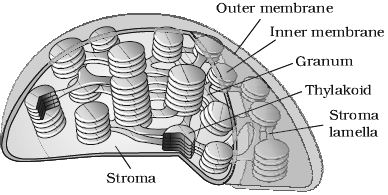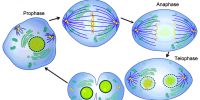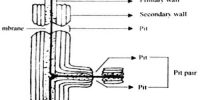The chloroplast contains chlorophyll and carotenoid pigments which are responsible for trapping light energy essential for photosynthesis. In the chromoplasts fat-soluble carotenoid pigments like carotene, xanthophylls and others are present. This gives the part of the plant a yellow, orange or red colour.
The leucoplasts are the colourless plastids of varied shapes and sizes with stored nutrients: Amyloplasts store carbohydrates (starch), e.g., potato; elaioplasts store oils and fats whereas the aleuroplasts store proteins.

Majority of the chloroplasts of the green plants are found in the mesophyll cells of the leaves. These are lens-shaped, oval, spherical, discoid or even ribbon-like organelles having variable length (5- 10mm) and width (2-4mm). Their number varies from 1 per cell of the Chlamyclomonas, a green alga to 20-40 per cell in the mesophyll.
Like mitochondria, the chloroplasts are also double membrane-bound. Of the two, the inner chloroplast membrane is relatively less permeable.













